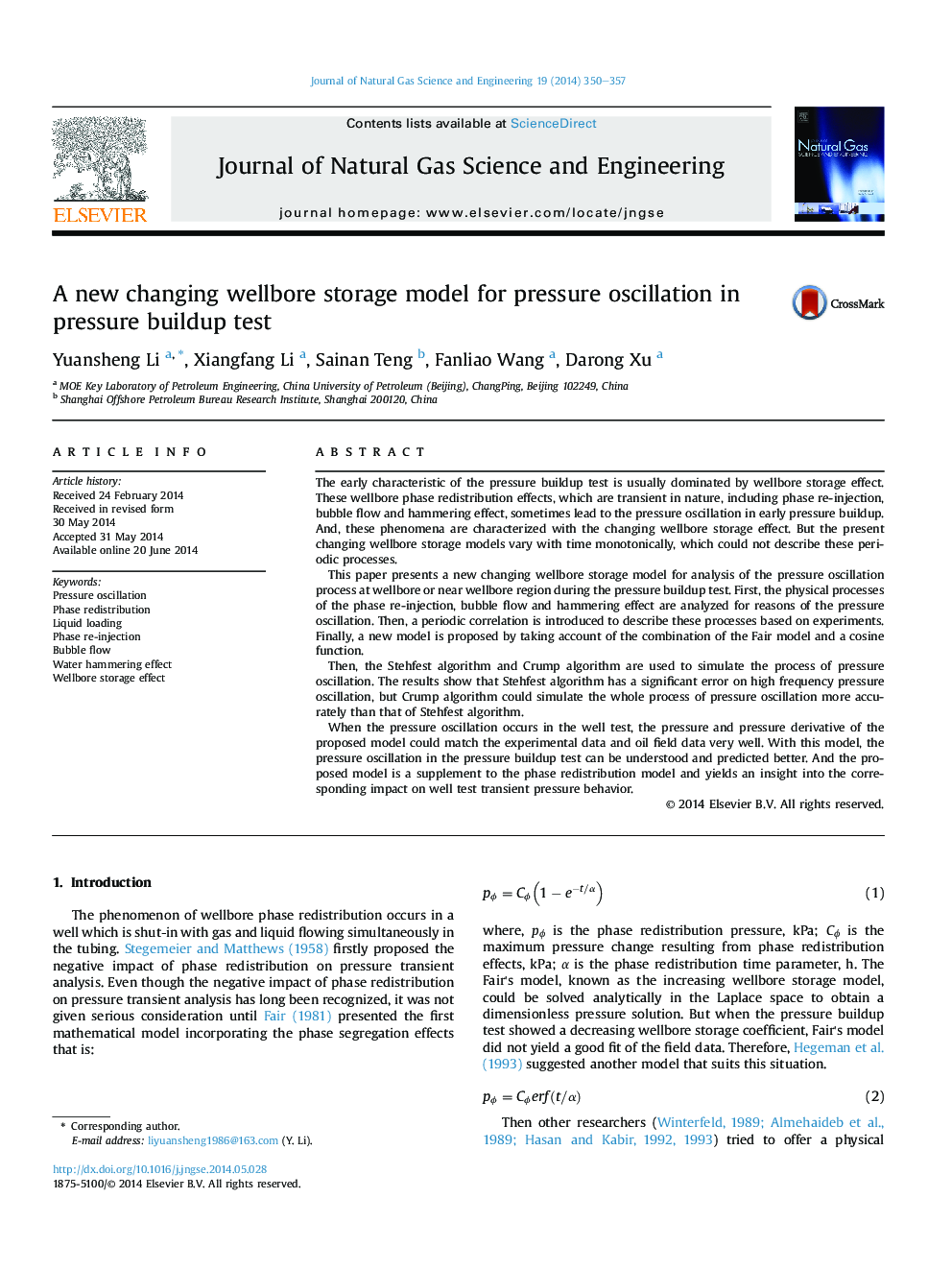| Article ID | Journal | Published Year | Pages | File Type |
|---|---|---|---|---|
| 1758005 | Journal of Natural Gas Science and Engineering | 2014 | 8 Pages |
•Pressure oscillation could be described by trigonometric function.•We propose a changing wellbore storage model for pressure oscillation.•The Stehfest algorithm does not simulate the process of pressure oscillation very well.•The Crump algorithm could simulate the process of pressure oscillation very well.
The early characteristic of the pressure buildup test is usually dominated by wellbore storage effect. These wellbore phase redistribution effects, which are transient in nature, including phase re-injection, bubble flow and hammering effect, sometimes lead to the pressure oscillation in early pressure buildup. And, these phenomena are characterized with the changing wellbore storage effect. But the present changing wellbore storage models vary with time monotonically, which could not describe these periodic processes.This paper presents a new changing wellbore storage model for analysis of the pressure oscillation process at wellbore or near wellbore region during the pressure buildup test. First, the physical processes of the phase re-injection, bubble flow and hammering effect are analyzed for reasons of the pressure oscillation. Then, a periodic correlation is introduced to describe these processes based on experiments. Finally, a new model is proposed by taking account of the combination of the Fair model and a cosine function.Then, the Stehfest algorithm and Crump algorithm are used to simulate the process of pressure oscillation. The results show that Stehfest algorithm has a significant error on high frequency pressure oscillation, but Crump algorithm could simulate the whole process of pressure oscillation more accurately than that of Stehfest algorithm.When the pressure oscillation occurs in the well test, the pressure and pressure derivative of the proposed model could match the experimental data and oil field data very well. With this model, the pressure oscillation in the pressure buildup test can be understood and predicted better. And the proposed model is a supplement to the phase redistribution model and yields an insight into the corresponding impact on well test transient pressure behavior.
